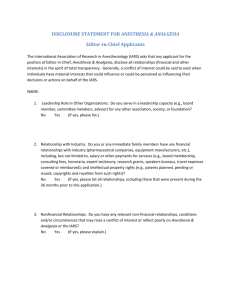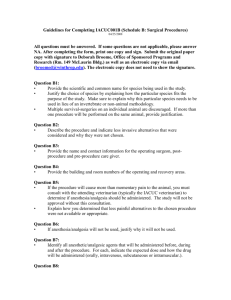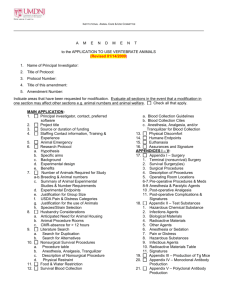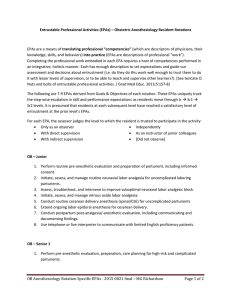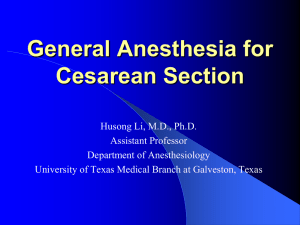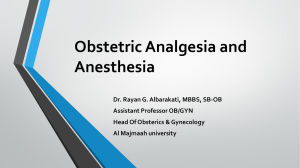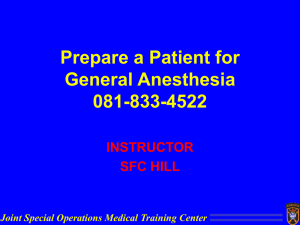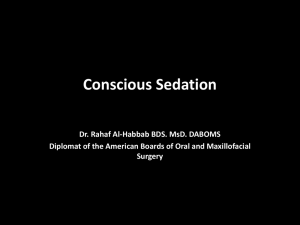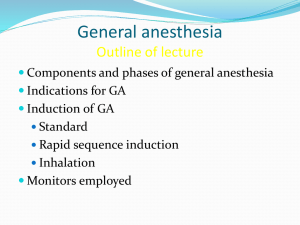4 Skills Crucial to Critical Thinking are - Delmar
advertisement
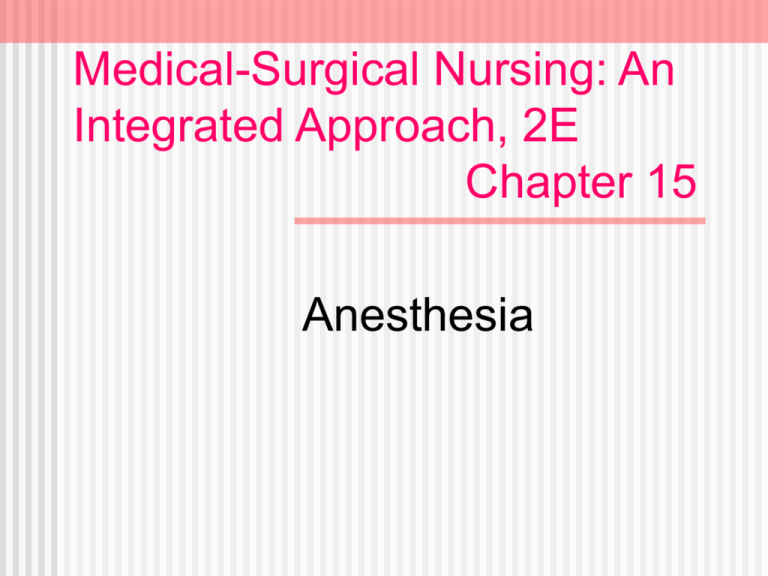
Medical-Surgical Nursing: An Integrated Approach, 2E Chapter 15 Anesthesia Anasthesia & Analgesia Essential to healthcare delivery today. Anasthesia – absence of normal sensation Analgesia – pain relief without anasthesia Preanesthetic Preparation Avoidance of foods and drink prevents passive regurgitation of gastric contents Clients should typically continue medications up to surgery Consent must be received Sedation Reduction of stress, excitement, or irritability and some suppression of CNS Typically used to relieve anxiety and discomfort during a procedure Residual effects include amnesia and letheragy Regional Anesthesia A region of the body is rendered insensible to pain. Types of Regional Anesthesia Local Nerve blocks Spinal & Epidural blocks Residual Effects Motor Block Sensory Block Sympathetic Block General Anesthesia Involves unconsciousness and complete insensibility to pain There are four stages of General Anesthesia: Induction Maintenance Emergence Recovery Induction & Airway Management Shortest stage of Anesthesia but critical Immediately after induction, the airway must be secured using a cuffed Endotracheal tube (ETT) Maintenence General Anesthesia is maintained with a combination of IV and inhaled drugs Sometimes specialized medicines are applied to achieve complete paralysis, relax skeletal muscles and more Emergence Client’s awareness returns as drug wears off Emergence must be carefully controlled and monitored Recovery Recovery may be an extended process with memory and other aspects affected for a long period Many anesthetics are absorbed into body fat and released slowly into the system Common Concerns Client may suffer from apnea, decline in respirations Few direct heart rate and blood pressure effects, but these should be closely monitored Client may have trouble regulating body temperature Client may have abnormal fluid levels Post Operative Pain Management Post-Operative pain results from: Tissue injury Inflammation Hormonal changes Hyperexcitability and more Methods for Controlling Pain Patient Controlled Analgesia Regional Analgesia Local anasthetics Opioids
